Ik Hyun Lee
NTIRE 2025 Challenge on Image Super-Resolution ($\times$4): Methods and Results
Apr 20, 2025Abstract:This paper presents the NTIRE 2025 image super-resolution ($\times$4) challenge, one of the associated competitions of the 10th NTIRE Workshop at CVPR 2025. The challenge aims to recover high-resolution (HR) images from low-resolution (LR) counterparts generated through bicubic downsampling with a $\times$4 scaling factor. The objective is to develop effective network designs or solutions that achieve state-of-the-art SR performance. To reflect the dual objectives of image SR research, the challenge includes two sub-tracks: (1) a restoration track, emphasizes pixel-wise accuracy and ranks submissions based on PSNR; (2) a perceptual track, focuses on visual realism and ranks results by a perceptual score. A total of 286 participants registered for the competition, with 25 teams submitting valid entries. This report summarizes the challenge design, datasets, evaluation protocol, the main results, and methods of each team. The challenge serves as a benchmark to advance the state of the art and foster progress in image SR.
Face-PAST: Facial Pose Awareness and Style Transfer Networks
Jul 18, 2023Abstract:Facial style transfer has been quite popular among researchers due to the rise of emerging technologies such as eXtended Reality (XR), Metaverse, and Non-Fungible Tokens (NFTs). Furthermore, StyleGAN methods along with transfer-learning strategies have reduced the problem of limited data to some extent. However, most of the StyleGAN methods overfit the styles while adding artifacts to facial images. In this paper, we propose a facial pose awareness and style transfer (Face-PAST) network that preserves facial details and structures while generating high-quality stylized images. Dual StyleGAN inspires our work, but in contrast, our work uses a pre-trained style generation network in an external style pass with a residual modulation block instead of a transform coding block. Furthermore, we use the gated mapping unit and facial structure, identity, and segmentation losses to preserve the facial structure and details. This enables us to train the network with a very limited amount of data while generating high-quality stylized images. Our training process adapts curriculum learning strategy to perform efficient and flexible style mixing in the generative space. We perform extensive experiments to show the superiority of Face-PAST in comparison to existing state-of-the-art methods.
2nd Place Solutions for UG2+ Challenge 2022 -- D$^{3}$Net for Mitigating Atmospheric Turbulence from Images
Aug 25, 2022



Abstract:This technical report briefly introduces to the D$^{3}$Net proposed by our team "TUK-IKLAB" for Atmospheric Turbulence Mitigation in $UG2^{+}$ Challenge at CVPR 2022. In the light of test and validation results on textual images to improve text recognition performance and hot-air balloon images for image enhancement, we can say that the proposed method achieves state-of-the-art performance. Furthermore, we also provide a visual comparison with publicly available denoising, deblurring, and frame averaging methods with respect to the proposed work. The proposed method ranked 2nd on the final leader-board of the aforementioned challenge in the testing phase, respectively.
NTIRE 2022 Challenge on Super-Resolution and Quality Enhancement of Compressed Video: Dataset, Methods and Results
Apr 25, 2022
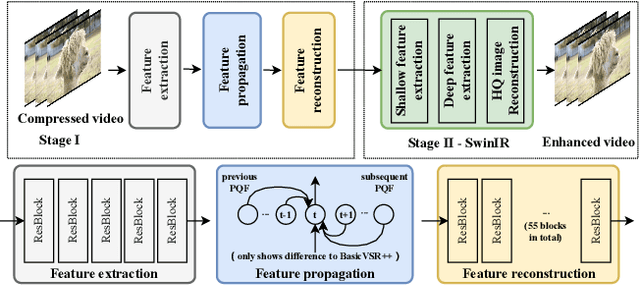

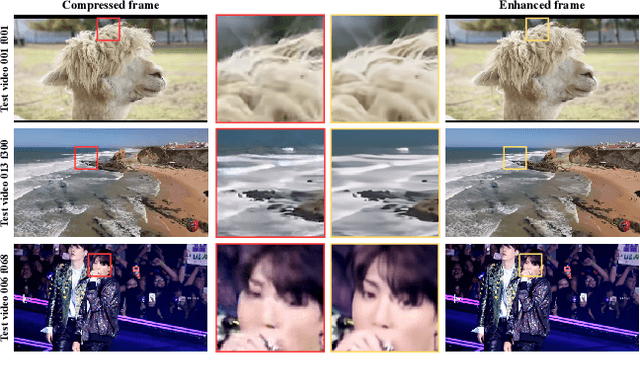
Abstract:This paper reviews the NTIRE 2022 Challenge on Super-Resolution and Quality Enhancement of Compressed Video. In this challenge, we proposed the LDV 2.0 dataset, which includes the LDV dataset (240 videos) and 95 additional videos. This challenge includes three tracks. Track 1 aims at enhancing the videos compressed by HEVC at a fixed QP. Track 2 and Track 3 target both the super-resolution and quality enhancement of HEVC compressed video. They require x2 and x4 super-resolution, respectively. The three tracks totally attract more than 600 registrations. In the test phase, 8 teams, 8 teams and 12 teams submitted the final results to Tracks 1, 2 and 3, respectively. The proposed methods and solutions gauge the state-of-the-art of super-resolution and quality enhancement of compressed video. The proposed LDV 2.0 dataset is available at https://github.com/RenYang-home/LDV_dataset. The homepage of this challenge (including open-sourced codes) is at https://github.com/RenYang-home/NTIRE22_VEnh_SR.
Get your Foes Fooled: Proximal Gradient Split Learning for Defense against Model Inversion Attacks on IoMT data
Jan 20, 2022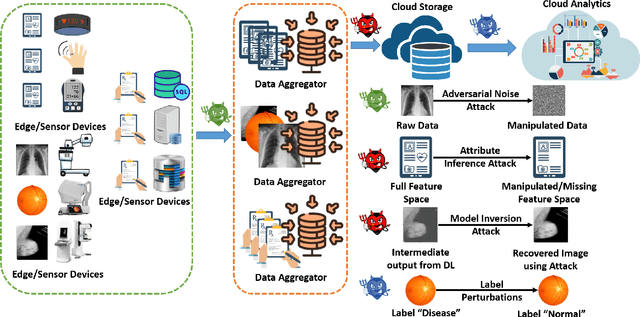
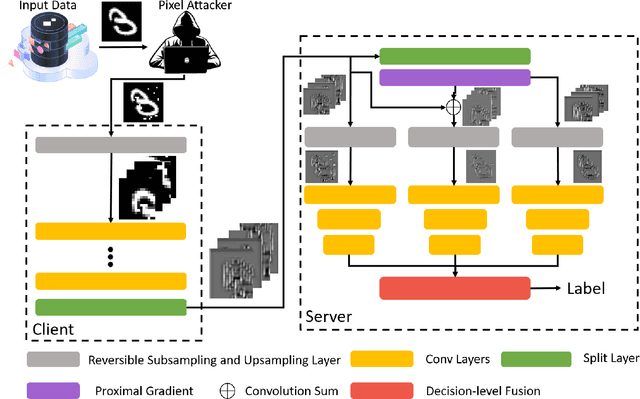
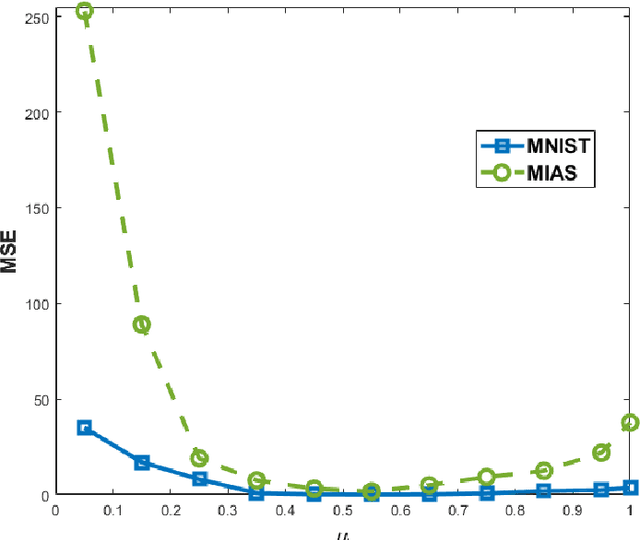
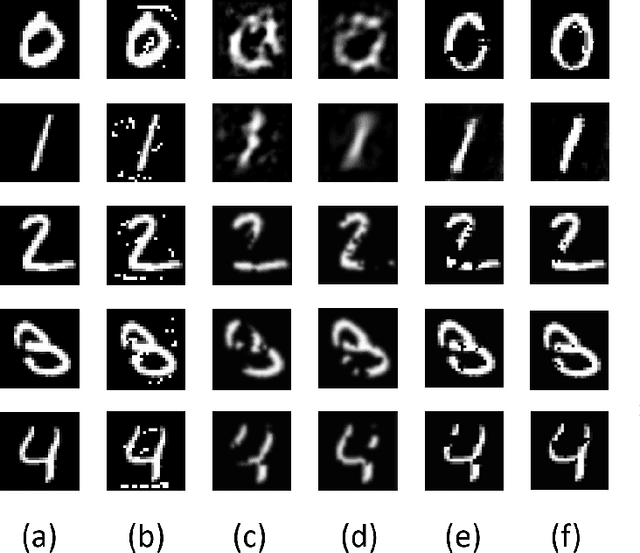
Abstract:The past decade has seen a rapid adoption of Artificial Intelligence (AI), specifically the deep learning networks, in Internet of Medical Things (IoMT) ecosystem. However, it has been shown recently that the deep learning networks can be exploited by adversarial attacks that not only make IoMT vulnerable to the data theft but also to the manipulation of medical diagnosis. The existing studies consider adding noise to the raw IoMT data or model parameters which not only reduces the overall performance concerning medical inferences but also is ineffective to the likes of deep leakage from gradients method. In this work, we propose proximal gradient split learning (PSGL) method for defense against the model inversion attacks. The proposed method intentionally attacks the IoMT data when undergoing the deep neural network training process at client side. We propose the use of proximal gradient method to recover gradient maps and a decision-level fusion strategy to improve the recognition performance. Extensive analysis show that the PGSL not only provides effective defense mechanism against the model inversion attacks but also helps in improving the recognition performance on publicly available datasets. We report 17.9$\%$ and 36.9$\%$ gains in accuracy over reconstructed and adversarial attacked images, respectively.
 Add to Chrome
Add to Chrome Add to Firefox
Add to Firefox Add to Edge
Add to Edge